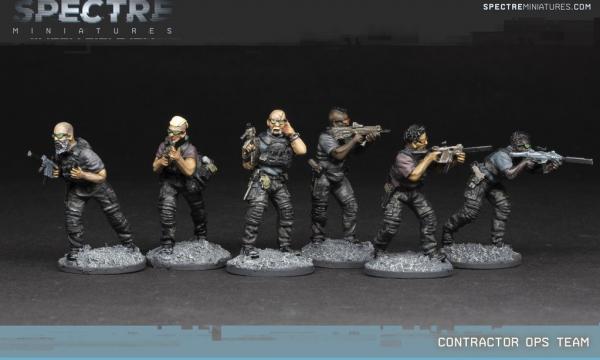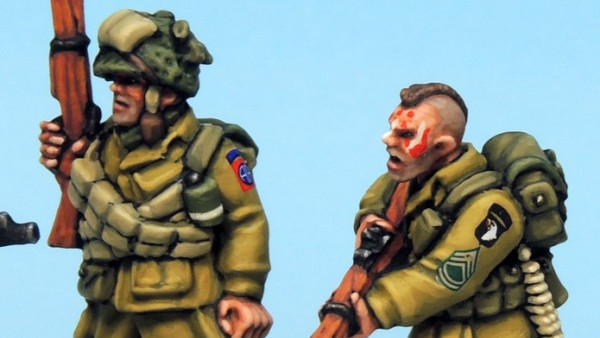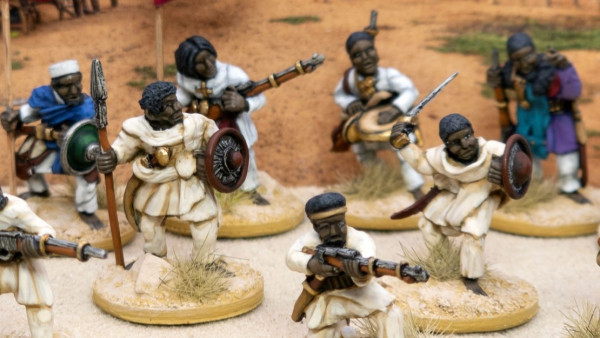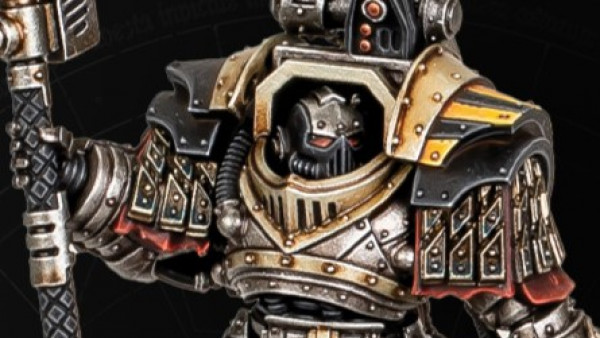Home › Forums › News, Rumours & General Discussion › Sitrep Podcast: Historical Gaming (and Register for Upcoming Gaming Event)!
Related Games:
Tagged: Modern Warfare, SITREP
This topic contains 484 replies, has 35 voices, and was last updated by ![]() madman1960 5 years, 9 months ago.
madman1960 5 years, 9 months ago.
-
AuthorPosts
-
May 28, 2019 at 4:10 pm #1395992May 28, 2019 at 5:24 pm #1396002
I will have to dig up the book and find it again. There was some issue getting an accurate distance measure with the thermal issues affecting the lasers. Thinking about it I think they gave the bombers GPS coordinates but those were off.
I thought I saw somewhere Air War C21 is based on the old SPI title. Is this correct? If so Air Superiority is a better and easier system.
Thank you on the ‘cats. Yes they are AIM-54s on the body hardpoints. Maybe on the glove points as well but a proper mix would be one sparrow or AIM-120 and an AIM-9 on each glove point. I am fighting eye infections so I couldn’t see well enough when mounting the planes.
May 31, 2019 at 6:17 am #1396879@madmansniper – I do not know if AirWar C21 draws from any other systems. I suppose all games do in some way. I would not be surprised by what you say, SPI made some great games back in the day. SSI, Avalon Hill, Victory Games, GDW, FASA for tactical science fiction … ah … those were the days. 😀
In what ways do you think Air Superiority is better?
I would say Valor & Victory definitely draws from ASL, Barry Doyle admits as much in the designer’s notes. But ASL is perhaps too heavy for today’s market, so while ASL is probably a better game “objectively,” V&V is far more accessible and people are actually playing it across a wide, multi-platform community.
May 31, 2019 at 12:55 pm #1397112It has been 25 years since I played Air Sup and 30 since I played Air War. So I do not remember all the differences but once AS came out we dropped AW and never went back. We did use the 19080(?) update to AW. Air Superiority just handled everything more accurately and cleaner in a “that makes sense” kind of way. Most air combat is a matter of energy management. Changing from potential energy (height) to kinetic energy (speed). As long as you can get your head around that mechanic everything else is icing. How engine power can be used to either increase speed, altitude or both is up to you. Turning harder creates more drag. Planes are not often limited in their turn ability as a specific radius but can turn at different radii but dependent on speed the harder and faster at which they turn they generate more drag. At high speeds you cannot turn as tight since the design limits of the airframe cannot handle the generated forces and often the wings will stall being forced into generating lift in such a way the wing would be in a stall (high speed stall). At low speeds you cannot turn as tight since you are not generating enough lift. Sometimes the two combine to produce a very narrow range of flight characteristics, for example the U2 at altitude could only turn at less than 1G at speed because it was barely above the stall in level flight and the increase in wing load of turning meant it would enter a high speed stall if it turned any harder.
That and many more examples were why JDs game was more accurate but frankly simpler than Air War. If you had a handle on real world flight mechanics his solutions were much more accurate and worked simpler. Nowadays you would start with the Speed of Heat which was the distillation of his game mechanics.
As for ASL the big turn offs were all the charts and the fact lots had to be accessed. Paring down what you needed to what can be accommodated on a counter and eliminating charts (a design feature of the period) is where i feel Conflict of Heroes gets it right. I have not played with vehicles or armour yet so those may not have the “right” feel. The IGOYOUGO sequence felt old school compared to CoH’s alternating system (which would be very hard to sustain in company size battles I admit). I am also a big fan of the “friction” systems being put forth nowadays, like Chain of Command where you don’t have unlimited control over all your forces. In CoC only some troops will be available each phase. But it is up to the player to determine WHICH ones he can control. I like both the realistic “feel” of limited control but when it happens it is YOUR choice who to spend your control on.
Basically to me ASL, and original squad leader are excellent games of the 1970s. But time and game design has marched on. The scale, time, distance and especially unit of SL/ASL is what I love the most. I have also relegated a few other systems (Tractics anyone) to the venerated area of used to be great and now stepping stones of gaming. I have played both a few times lately, still appreciate the leap forward they were but see so many systems which are another leap forward I can’t see going back. Just my opinion and take on things.
May 31, 2019 at 3:45 pm #1397217Okay, @madman1960 – we might be talking about different game systems re: AirWar C21. The game only came out 15 years ago (1st Edition – 2004) with 2nd Edition (what I play) ten years ago. The AirWar C21 light (which I don’t use) came out in 2017.
While I agree that 1980s ASL was a touch much (and this is coming from a massive fan of hex and counter games in general, especially older ones) – I am not a fan of the design philosophy of “putting everything on the counter because charts make our heads hurt.” Again, I feel some games like ASL relied too heavily on too many charts. But other games, like say … the PanzerBlitz/Leader/Arab-Israeli Wars line really boils down to two charts, a CRT (which you quickly memorize anyway) and a WEC (weapons effectiveness chart). Other than that, the game characteristics are on the counter. So a middle of the road solution?
Too much data on the counter means the counter gets too crowded. Maybe I’m just old and eye strain is an issue.
The answer I hear often is to make the counters bigger. Fine, except now your hexes have to get bigger to accommodate the counters, which means a smaller number of counters on a publishable gameboard, which means simpler and more abstracted terrain. Meh.
I just feel like game companies could invest a little in one or two well designed, clearly designed charts. Few number of charts, well-designed charts, and well-designed quick reference sheets. Sadly, and I think this is where we agree, these are goals not always met, either today or in the past.
May 31, 2019 at 4:13 pm #1397220I doubted AirWar C21 used Air War’s mechanics. Somewhere I heard it did. When we played Air War and Air Superiority we only handled a plane or two per player. Maybe you could do 4 in a pinch or in a friendly game but frankly we were almost role-playing as one player one person in the cockpit. I have also done missile kills with AS which with the early radar homing missiles required you to keep the very narrow beam of the guiding plane’s radar and the very narrow beam of the missile’s receiving system on the maneuvering target. Frankly I found that a lot of fun.
I too am an old time hex and counter player although I always had the urge to make as much miniature possible as could be. I have played games where all the info is on a, sometimes, very crowded counter to games where the counter only had a facing and identity and the unit’s characteristics were presented off table such as AS. Yes crowded counters bump up against older eyes and the limits of map and counter sizes. Conflict of Heroes uses larger counters and smaller geomorphic maps as its solution but there are much worse out there.
I guess what I find too old school are the various Combat Results Charts of the day. Many force levels or force ratios along one edge with the di(c)e roll and all the attendant modifiers along the other. Then introducing other weapons systems etc. each of which uses a modified or new CRT just adds to the load. I don’t know what the “ideal” solution is or I would be saying X is the only game system, rules, etc. to use and you are stupid to do elsewise. Just think how many friends I would generate!
May 31, 2019 at 5:23 pm #1397271Just had this on another thread discussing the pros and cons of Robert L Shaw’s book Fighter Combat: Tactics and Maneuvering. Does AWC21 cover scissoring? Either horizontal (easy to run and visualize) or vertical (real fun). This is the level of AS, knife fight tactics all the way to long range missile combat with lots of the fun of going through the merge.
May 31, 2019 at 11:00 pm #1397471On another topic I recently followed links to this site and ordered the video. Not at all what I expected but very engrossing. Not having any military experience I don’t know what I was expecting other than a rah rah movie. This is not that kind of movie. Very recommended for our group.
http://www.shadowcompanythemovie.com/
https://en.wikipedia.org/wiki/Shadow_Company
June 1, 2019 at 2:03 am #1397521@madman1960 – Okay, I might have gotten confused earlier. Air War and AirWar C21 are indeed different games, I do not know if AirWar C21 uses / borrows from Air War because I am unfamiliar with Air War, or the Air Superiority system you also mention.
So does AirWar C21 include a “scissor?” Eh … in a way, yes. And in the way I really enjoy.
So in AirWar C21, aircraft can move in two basic ways. One, with a normal turn wheel and ruler, or also with “maneuvers” (which you “declare” in secret by laying down cards and everyone reveals at once. Sounds hokey, but stick with me.
There is no “Scissor” maneuver card. Which I actually really like. This is a big part of what I don’t like in a lot of games, especially more recent ones. Where tactics or maneuvers of doctrines or methodologies are just “cheaped out” on special unit abilities or cards or annotations in a stat line or an addendum in a supplement you have to buy or whatever.
If you want to do a scissor in Air Car C21, g**damnit, you have to DO a scissor. A normal movement phase is usually executed four simple steps. Depending on whatever speed you’re doing (energy management, as you say earlier), you move half, execute a turn up to your maneuverability class, then move the other half of your prescribed distance, then execute another turn up to your maneuverability class.
So if you lose initiative and an enemy is on your six (i.e., you have to move first), you can dump as much speed as you can (limited by the plane’s flight characteristics – and watch that stall speed … TRUST me), move, turn, move, turn, and if you execute those two turns in opposing directions, that’s basically a “scissor” that could well force an enemy to overshoot you if he’s too close or moving too fast.
An enemy on your six can try to counter with the “Tailing” rule, but that depends on how maneuverable his plane is, his position in relation ship to yours (both his arc and yours), and luck with the dice. There are no magic tactics that work every time, after all.
Another “scissor-like” option is a “Break” maneuver, if you execute it a certain way. In Break, you dumps even more speed, and get to execute turns at +2 categories higher than normal for your plane, and gives a pretty serious penalty for any weapons that try to hit you in that phase. The trade-off is that these two turns are pretty close to max-G turns for your plane and pilot. Your plane can fire no weapons systems that turn, and in fact can’t do this at all without losing heavy external ordinance (bombs, cruise missiles, large external fuel tanks, etc – AAMs and rocket pods are okay). Oh, and you have to actually MAKE the “Break” roll as well. Yeah, you DON’T want to fail that roll. But if it works you dump LOT of speed, make two opposing turns in a basic “S” shape, and can really wind up on your opponent’s six. I’ll have to look it up,I don’t even know if he can even match that with a Tailing check. Risky, but effective if you can pull it off.
These re the kinds of rules mechanics I enjoy, that just set “physics” and unit capabilities out for the players and then the players have to really figure out what they would do. Under ideal circumstances, the player organically discovers real-world tactics thanks to the EMERGENT properties of the game’s tactics, mechanics, and detail. Later on they’ll read about these things actually happening in combat, and I love that moment when they say: “Oh, damn! I do something JUST LIKE THAT in x-game (insert name of system). I didn’t know there was a name for that!” 😀
June 1, 2019 at 3:26 am #1397524Sounds reasonable. At cons the game I usually play is check your six. I assume it is a developed version of the old Battleline titles Air Force and Dauntless. In any case you have to preplot your movement for the game turn in a method just like the system used in Wooden Ships & Iron men. Higher quality pilots have the option to change their plots within limits.
Please bear with me as it has been 25 years since I played Air Sup so some of this may be off.
So to start you would choose your throttle setting. Idle, Mil power (max thrust no reheat) or afterburner. You can choose values between these levels but for game purposes the setting level gives you fuel use and an engine level for infra red missile or other heat sensitive sensor use. If you choose idle the result is usually an immediate reduction in flight speed given in terms of flight points. These settings and their characteristics are given for six altitude groupings which are chosen based on air density and other flight related characteristics.
Now these flight points can be used for horizontal flight or vertical flight depending on your speed and climb or dive angle. A chart listed the differences allowed depending on climb or dive type. If I remember correctly there were about 8 pitch angles from nose straight up to straight down. In addition to how many HFPs vs VFPs you had your pitch also affects how the radar and or missile tracking cones limits are determined.
So in this case I might choose to cut to idle throw on speed brakes (they use so many flight points and I can’t remember but probably added drag). Then perform a rolling maneuver (faster nose angle changes but include some sideways movement as well), alternating direction through the game turn. Now at the end of the game turn (assuming I am still alive) I would total the energy generated by my engine as thrust, any energy gained from diving (over one level). Then I would determine how much drag I caused from engine setting, drag brake use, gaining altitude, costs for maneuvers or turning (altitude and how many Gs I pulled dependent) . I would subtract energy lost from that gained and for every 3 units in either direction my new speed (and fight points) would be increased or decreased accordingly. Half points are retained and given to the aircraft when they translate (add) up to full ones but your speed is still the same.
Here I am getting foggier. In order to change the direction of a turn you have to change the angle of bank of your aircraft. I think we had 8 positions corresponding to level, wings banked right or left with plane still right side up, angled 90 over and inverted right or left and flat inverted. You had to bank to turn, and maybe as a result of or a requirement to perform some maneuvers. Most turns took X number of flight points to complete a 30 degree facing change. JD developed an ingenious 12 point direction of flight track on standard hexagonal game maps so you could face a hex side as usual or a hex point. Some planes banked fast allowing you to immediately change bank angle at any time while most took a flight point to change bank points. Some slow ones took multiple flight points to change bank. So turns didn’t happen all at once or swap back and forth instantly. By the way for each altitude level the number of flight points required to change your facing was shown at different values (common chart for all planes). Each plane gained drag, altitude dependent for the turn sharpness and as you turned sharper your minimum (stall) speed also changed so some planes couldn’t turn tight at altitude.
So a simple rolling scissor maneuver could easily last four to six game turns as an example. In the game you are allowed to shoot up to twice per turn with the only stipulation being a flight point had to be spent between shots. So if you moved first, usual for planes disadvantaged (in front of their opponent) and were allowed a full turn’s movement before your opponent moved (not likely) they often had a shot as soon as they moved or as they drew in close. In JD’s game the first player could be interrupted in their move by their opponent after the first player had moved a minimum number of flight points. The opponent, who had to have the target disadvantaged, could then move half his flight points shooting as they went. This allowed a slower moving trailing plane not to be outdistanced before getting a shot in.
Of course us game nerds didn’t stop there but used proportional moves stolen from Star Fleet Battles. So if you had 5 FPs to your opponents 7 then we used a track to tell when each would move. No interrupts were needed as movement would remain proportional. Now combine all this with details such as banked planes can only spot planes on the inside of their turns, planes pitched up or down have blind areas due to their noses covering targets, carrying parts of turns from game turn to game turn and having to fly off the carried turns (remember to bank the other way first) and you can start to get a feel for AS.
I only brought up rolling scissors as they were and advanced tactic used by extreme game, and especially fight pilot tactics, nerds. I probably used them in 25% of my games. They could be very powerful but the game allowed exact play which translated to real world tactics, not only with this maneuver combination but many others as well. The techniques covered in Shaw’s book were our life blood. Check your six, no way, let your bogie check his!
June 1, 2019 at 2:23 pm #1397813Season 2 Final Episode of our podcast
June 1, 2019 at 11:07 pm #1398199I’m glad you posted the ops center. I’m used to it being on the front page for a little while.
June 3, 2019 at 3:16 pm #1399435Holy hell @madman1960 , that game sounds a lot more detailed than anything AirWar C21 tries to do. I think AirWar C21 goes for breadth – fast play, quick access, and once you get the Data Annex, you can do any air-to-air engagement since Korea, nay nation, etc. I’ve also seen (but I do not have) expansions for 1918, etc.
The one thing I have noticed missing is any kind of data / stats for sea-based weapons systems. The included systems like the Sea Cat, Sea Dart, and Sea Wolf in their Falklands Operation Corporate supplement, but these were in 1st Edition which wasn’t real compatible with 2nd Edition. So I had to find the closest analogs I could and sort of shoot from the hip in some of our Falklands games.
But it all worked out in the end!
June 5, 2019 at 3:44 pm #1400457June 8, 2019 at 3:30 pm #1402186New From Spectre (text from the webstore)
This six-man mercenary squad can be used to represent a variety of mercenary forces seen the world over – corporate security, ex-special operations ‘contractors’ conducting operations on behalf of their paymasters, or even high-end criminals. They are geared up for urban operations and are armed with a variety of compact weapons – assault carbines (Tavor) and suppressed SMGs (Kriss Vector and Scorpion Evo), as well as carrying sidearms. They wear combat clothing and plate carriers containing spare ammo, comms and med kit.
These models are perfect for a wide range of scenarios in games of Spectre: Operations, whether as the good guys – or the bad – and will make challenging opposition for all factions.

-
AuthorPosts
You must be logged in to reply to this topic.







































































